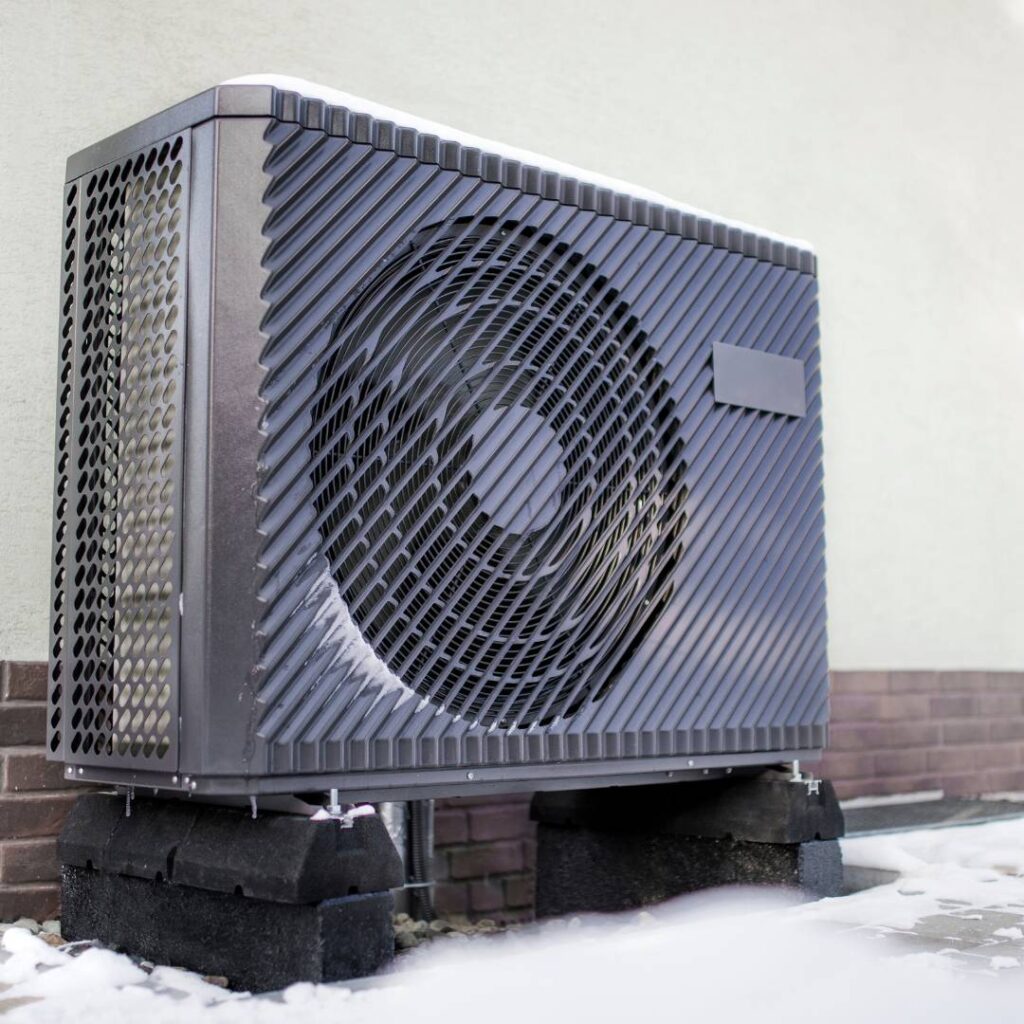Are you looking to enhance the comfort of your home while reducing energy costs? Heat pump systems offer an affordable and reliable way to do just that. But what exactly is a heat pump system and how does it work?
Heat pumps are a great choice for many homeowners because they can both cool and heat your living spaces, depending on the season or outside climate.
Today we want to show you step-by-step instructions on what a heat pump system is and how it works, so you can determine if one is right for your home.
What Is a Heat Pump System
So, what exactly is a heat pump system? If you’ve never heard of one before, you might be surprised to learn that it’s a heating and cooling solution that can offer several advantages over traditional HVAC systems.
A heat pump works by transferring heat between the indoor and outdoor environments, using electricity to move warm air in or out of your home. This means that you don’t need separate air conditioning and heating systems, a heat pump does both.
It’s also typically more energy-efficient than other options, thanks to its ability to move heat rather than generate it. So if you’re looking for a convenient and eco-friendly way to keep your home comfortable, a heat pump system might be just what you need.

Step By Step On How They Work
A heat pump system consists of two major components: an outdoor unit and an indoor unit, much like a mini-split. The outdoor unit contains a compressor, a condenser coil, and a fan. The indoor unit includes an evaporator coil, a fan, and an air filter. The evaporator coil is located inside the building, while the condenser coil is located outside.
Step-by-step, here’s how the system works:
1. The heat pump system starts with the outdoor or exterior unit, which absorbs heat energy from the surrounding air, even at low temperatures.
2. This absorbed heat energy is then transferred to the refrigerant that circulates through the outdoor unit. As a result, the refrigerant vaporizes and becomes a gas.
3. The gaseous refrigerant is then pumped through the insulated copper tubing that leads into the indoor unit, which is installed inside the building or home.
4. As the gaseous refrigerant enters the indoor unit, it passes through a component called the compressor, which increases the pressure and, in turn, the temperature of the refrigerant.
5. The heated refrigerant then flows through a series of coils that run through the indoor unit. These coils release heat, which warms the air in the rooms.
6. The expelled cool air is then drawn back into the indoor unit, where it passes over a set of evaporator coils. These coils absorb the heat from the air, which cools it.
7. The cooled air is then sent back into the rooms, while the heated refrigerant flows back to the outdoor unit, where it is cooled down and reheated again.
Overall, a heat pump system works by using a small amount of electricity to transfer heat energy from one location to another. This process makes it one of the most energy-efficient means of heating and cooling homes while reducing energy costs.
Benefits of using a heat pump system
There are pros and cons of having heat pumps vs a furnace or any other system. So let’s take a look at some of the benefits they offer.
First, heat pump systems are incredibly energy efficient. As previously mentioned, they are able to transfer heat rather than generate it, which helps reduce energy costs significantly. They can reduce your energy consumption for heating by up to 50%.
They also require less maintenance and can last for years with only a few annual tune-ups.
Heat pumps offer control over your home’s climate as well. With a programmable thermostat, you can easily adjust the temperature in any room of your house and set different temperatures for different times of day or night.
Finally, heat pumps can provide year-round comfort because they work both as an air conditioner and a heater. This means you don’t need separate heating and cooling systems, saving money on installation costs as well as space.
Installation of a heat pump system
Installing a heat pump system is not something that can be done by just anyone, as it requires expertise and knowledge of the specific system, much like any other HVAC system. Working with professional heat pump services can help make sure that installation is completed properly and safely.
If you’re looking to get a heat pump system installed for your home, find your local HVAC contractor and ask them about their heat pump services.


